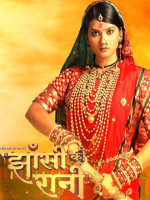Ek Veer Stree Ki Kahaani... Jhansi Ki Rani Filming Locations

Where was Ek Veer Stree Ki Kahaani... Jhansi Ki Rani filmed? Ek Veer Stree Ki Kahaani... Jhansi Ki Rani was filmed in 2 locations across India in the following places:
Ek Veer Stree Ki Kahaani... Jhansi Ki Rani Filming Locations
Jaipur is the capital of India’s Rajasthan state. It evokes the royal family that once ruled the region and that, in 1727, founded what is now called the Old City, or “Pink City” for its trademark building color. At the center of its stately street grid (notable in India) stands the opulent, colonnaded City Palace complex. With gardens, courtyards and museums, part of it is still a royal residence.
Karjat is a city near Mumbai, in the Indian state of Maharashtra. Its steep Ulhas Valley is lush in the rainy season, with a full river and waterfalls. Bahiri Cave, overlooking the valley, is a Hindu pilgrimage site. The ancient Kondeshwar Temple is dedicated to Lord Shiva. The Kondana Caves are 16 man-made caverns dating from the 1st century B.C., with stupas and statues. They were home to Buddhist monks.
Ek Veer Stree Ki Kahaani... Jhansi Ki Rani (2009)
Ek Veer Stree ki Kahaani... Jhansi Ki Rani is the story of an ordinary girl who went on to become an extraordinary ruler. Her defiance against the British is exemplary even today. The fervor that she aroused gave birth to various leaders and revolutionaries who finally freed our nation from the British. The show attempts to bring forth the various facets of this remarkable woman which are yet unknown to people. The Rani is shown as a mother, as a wife, as a daughter, as a warrior and essays all the roles with equal aplomb. The show is a tribute to her bravery, gallantry and patriotism. Born as Manikarnika, Lakshmi Bai, also known as 'Manu' was the daughter of a Maharashtrian Brahmin Moropant Tambe from Varanasi. While other girls of her age chose to do household chores, she played and defeated the local boys in muddy matches of kabaddi. She married Gangadhar Rao, who was the Raja of Jhansi, at a very tender age. It was after her husband's untimely demise, while she was still an adolescent that the agile Rani became a true warrior and an epitome of women's power in the country. This historical tale attempts to portray how an ordinary woman became an extraordinary exponent of Indian freedom movement.
